Overcaptioning: Which sounds are significant?
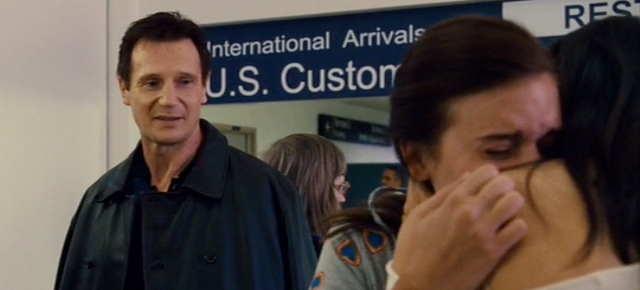
Which sounds are significant? How does the captioner choose which sounds to caption? Are some captions unnecessary? Why isn’t it possible to caption every sound in the environment?
The PA announcement at the end of Taken
Consider the emotional family reunion at the end of Taken, a 2008 thriller starring Liam Neeson. The reunion at the airport following the rescue of Neeson’s daughter from human sex trafficking is disrupted by a captioned, incomplete, and ironic announcement over the airport’s public address system. As the family embraces and speaks to each other in person for the first time since their daughter was kidnapped and sold into sex slavery, a partially muffled PA announcement interjects on the caption layer. A question from the stepfather (“Shall we go?”) interrupts the PA announcement just as the announcer is about to tell viewers and listeners what is “not required.” The main point of the announcement is muffled as the stepfather speaks. It is not possible for hearing viewers to make out the uncaptioned spoken words of the PA. Ironically, the movie itself is about activities that are not officially “sponsored” (i.e., kidnapping, human trafficking). In this sense, then, the PA announcement is relevant to the larger themes of the movie, even if the announcement is most likely not a public warning about kidnapping or slavery. But irony should never be enough to trump a scene’s thematic intensity. Because the announcement disrupts the emotional intensity of the triumphant reunion, and its main idea is inaudible (whose activities are not sponsored?), it should not have been captioned verbatim. A complete, verbatim rendering of the announcement is impossible anyway and only leads to confusion and distraction.
Source: Taken, 2008. DVD. Featured captions include: “[Man on P.A.] Attention travelers, you are not required–” and “This airport does not sponsor their activities.”
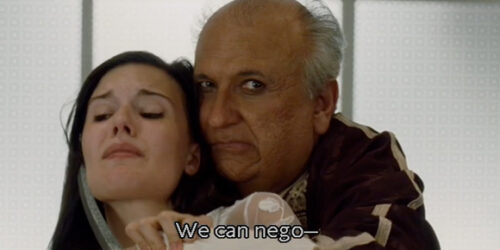


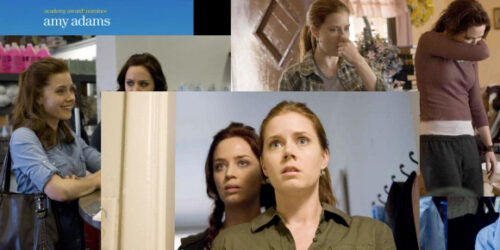
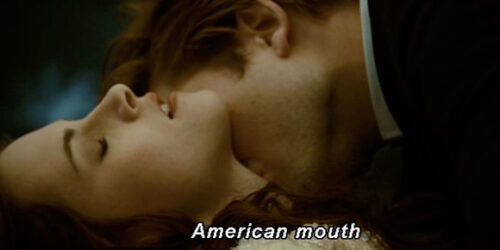
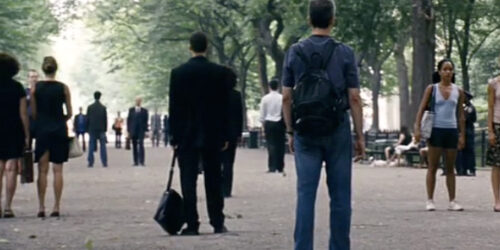
I’m deaf. With my hearing aid, I can hear voices and a few background noises, but not understand what people are saying.
Hearing viewers can hear that PA system and understand what is said.
I could hear that voice, but NOT understand what is said without the captions.
Why should someone else decide what is worth captioning and what is not.
In sum, the objection smacks of censorism and paternalism to me.
YOU didn’t like the PA announcement, so you wish it wasn’t captioned. Have you suggested the audio portion be removed too? The producers of the film felt it was important to leave the audio PA in the film.
Thanks for your comment. I think the question is whether anything *significant* is gained by including the PA caption in its current form, especially when the PA caption is incomplete (i.e. it’s not clear what activities are not being sponsored, which is confusing and distracting). Remember that captioning is not about providing a description of *all* audio content but only the *significant* audio content. It’s impossible to caption everything. Sound is pervasive and someone needs to make a decision about what to caption. That’s not censorship or paternalism. Those decisions should be driven by the narrative.
The scene is not about a specific PA announcement but a family being reunited at the end of the film. The purpose of the scene should drive decisions about what and how to caption. Call it paternalism if you like but I prefer to call it “attention to the narrative.” Everything can’t be captioned. There are some pretty loud footsteps in that scene, some loud but indistinct chatter, and at least one loud car horn sound. Someone had the good sense not to caption them. Would you prefer to have the caption space at the bottom of your screen filled with descriptions of these sounds too? Probably not. Caption space is limited. Only significant sounds should be captioned. Those footsteps seem to be almost as loud as the PA caption, but volume alone shouldn’t drive caption design. (Stuart’s whisper is captioned, as it should be, because it’s significant to this narrative.) There’s an art involved here, a very limited space for captions, and a narrative that must be honored above all.
Decisions need to be made because every sound can’t be captioned. If it were up to me (and I reserve the right to criticize the producers rather than accept what appears to me to be a poor decision on their part), I would have downplayed the specific language of the PA announcement (e.g. using something like [indistinct announcement over PA], or even [crowd talks indistinctly] at the beginning of the airport scene). Perhaps it would be different if the PA announcement were complete or didn’t disrupt the reunion so dramatically, but instead we’re given (both aurally and in caption form) an incomplete thought that detracts from the emotional intensity of the reunion. The PA caption, if included at all, needs to be backgrounded visually, otherwise it competes with the main narrative. The main point of the announcement is covered aurally by the main narrative and hence not captioned. That’s confusing and distracting.
I’m a hearing viewer and I can’t hear the entire PA announcement (trust me, I tried multiple times). My experience is thus not much different than yours, at least in this one particular instance. The caption and my hearing don’t help me understand the point of the PA announcement any better. So I would disagree with you when you say that hearing viewers can hear that voice. No, we can’t. Not the main point of the announcement anyway, since it’s covered by Stuart saying “Shall we go?” But the more important question is: Does it matter whether anyone can hear or read the entire PA announcement? I don’t think it does. Simply knowing that there’s some background airport noise or an indistinct PA announcement is enough.
I also disagree with your claim that leaving something out is censorship. Countless sounds are left out of every caption file — they have to be left out. There isn’t enough room to include every sound. It’s not censorship but the art of captioning. Someone must make these decisions. Captioning is not objective science. (BTW, it sounds like there’s a foreign language PA at the beginning of that scene. It’s not significant and I’m glad there is no reference to it — even a vague one like [PA announcement] — in the caption file. It’s not censorship to leave it out but an attention to the needs of the narrative.).
The producers may disagree with me here but that doesn’t make them right simply because they are producers and I’m merely commenting on their work.
No one is really talking about caption design in these ways. No one is providing criteria for helping us decide what is significant and what isn’t. I’m trying to work through the question of significance in this post. I’m glad you took the time to respond, even if you disagree. People who use captions need to have more conversations about these issues.
Sean Zdenek
I agree with you in that captioning is an art and it is about using good judgment. I remember watching a very emotional scene from some movie and there were captions for various faint background sounds such as a man coughing. It totally ruined the moment. It was distracting. Someone who relies on captions and not hear any of those unimportant background sounds, may think, “Oh, someone is coughing, and they are captioning it, so it must be important.”
Thanks for posting this. Very interesting site.
(e
Hmmm. A movie is a carefully produced and edited thing. The producer *knew* that announcement was in there. He could have quickly edited the sound, or recreated that short scene, but he chose to leave in, despite, or perhaps because of it’s message. Are you sure which it is?
The caption for the PA announcement was confusing because of the interruption in the middle of it. I found that I was attending more to that announcement, trying to figure out what it said and why it was deemed important enough to include in the captioning stream than I was to the interaction between Bryan and the mother. It’s not paternalism to try to make the captioning as meaningful as possible. In this case, the captioning would be improved by omitting the PA announcement caption or including, instead, a general reference to the ambient airport noise.
Diane,
That was my point exactly. Thanks.
Sean
I think the captioner has to be able to make the distinction between “soundscape” and “sound cues”. It’s been interesting going from offline television captioning to theater captioning. When I did television captioning, I never received a script; I just typed what I heard and tried to determine which sound effects I thought were important. For instance, as I said to Sean when I spoke with him a few weeks ago, nearly every time I did a movie that included a suburban scene outdoors at night, there would always be a dog barking in the background. In horror movies, where this background noise was highly atmospheric, I would sometimes include (dog barking) or (dog barking faintly), because even though the barking was more part of a soundscape than part of a specific sound effect, I felt that it was relevant to the atmosphere the filmmakers were trying to build up. In other movies, where the crickets, dogs barking, occasional cars driving by, and other ambient sounds were probably just part of a stock soundscape used in countless other suburban nighttime movie scenes, I didn’t put in any sound parenthetical. Now that I caption plays instead of movies, I’m able to put in the sound effects specifically notated in the script by the playwright, but I generally leave out descriptions of the soundscape that are invented by the director, because they tend not to be as relevant to what’s going on and more arbitrary to the understanding of the plot. Of course, when the director explicitly adds something to the playwright’s vision and includes a new sound effect, I’ll caption it, but if they’re just adding their own sound design to bolster the overall mood set originally by the script, I’ll do my best to leave background noises in the background so I don’t wind up gilding the lily.
Mirabai,
Excellent point and great example. I’m working with an example from Extract now that involves a nighttime scene at the dinner table. The dog barks and the crickets chirp in the captions, but these sounds seem insignificant or at least distracting in the context of a dark comedy.
The soundscape includes what R. Murray Schafer calls keynote sounds. A keynote sound provides the often unnoticed background hum for a particular space. (As I sit in McDonald’s writing this response, I’m suddenly aware of the “key” of this space with its ice machines, TV noise, and mostly indistinct chattering.)
Another example: PA announcements in movies that are intended to capture that mostly unnoticed key of the space but are captioned verbatim. I like the approach you took to handling stock sounds.
Sean